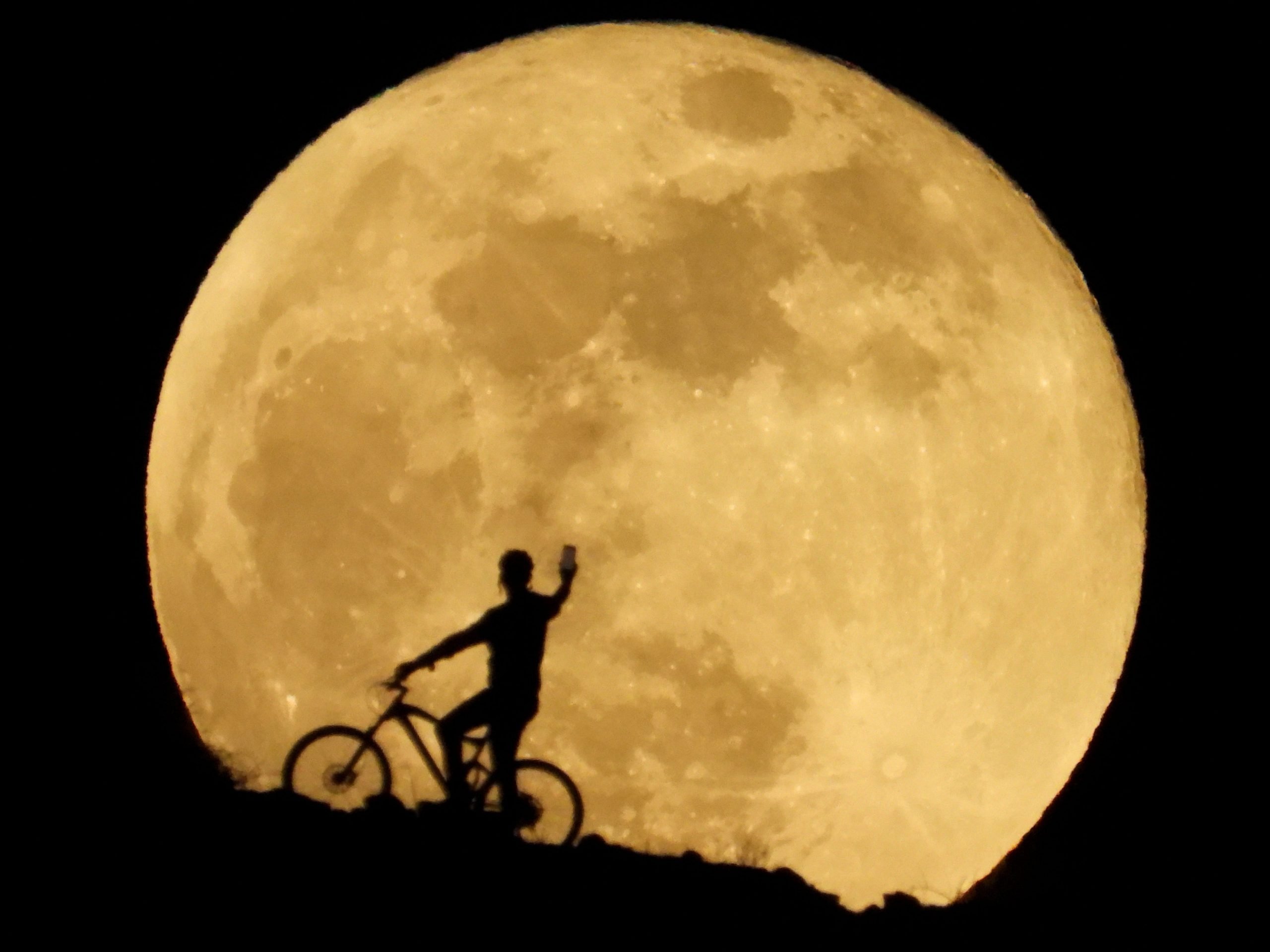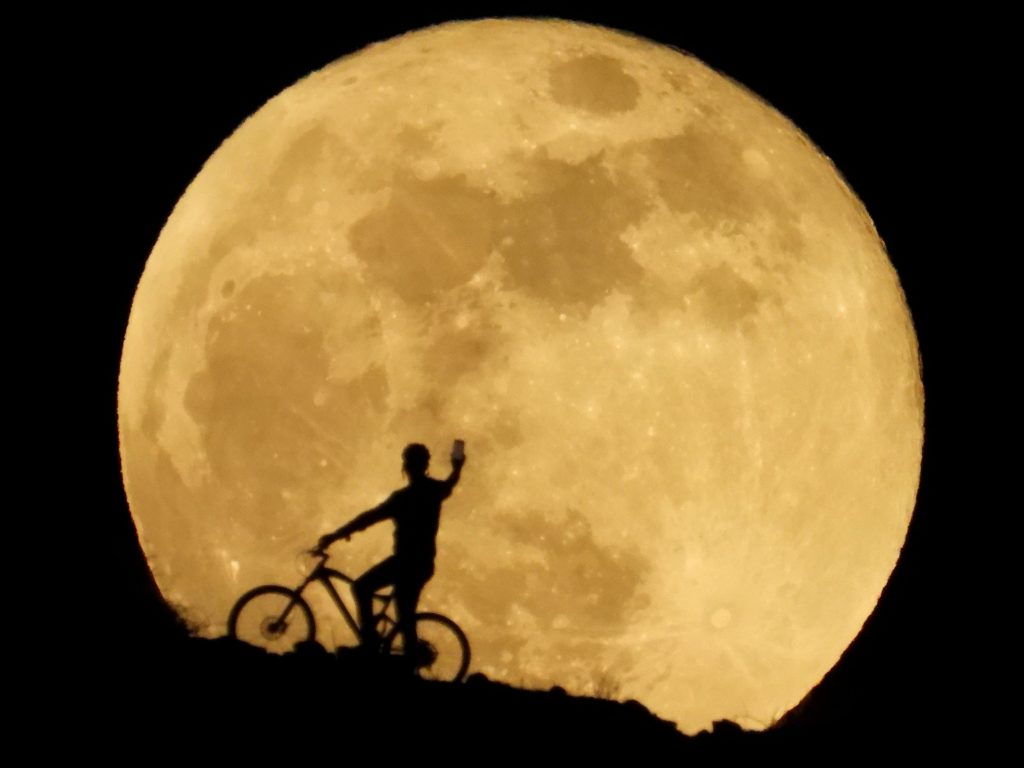
Borja Suarez/Reuters
- A Strawberry Moon will rise on Thursday night. It's named for the strawberry harvest, not for color.
- It may be the last visible supermoon of 2021, though that is up for debate.
- The name "Strawberry Moon" comes from the Anishnaabe, Sioux, and Algonquin peoples of North America.
- See more stories on Insider's business page.
A big, bright Strawberry Moon will crawl across the sky on Thursday night.
It's also called the Rose Moon or the Hot Moon, but none of these nicknames refer to its color – they're all just names for the full moon in the month of June. However, the moon tends to sit lower in the sky in June, according to NASA, which could give it a pinkish hue as it shines through the thickest parts of the atmosphere.
Thursday's celestial display is also a supermoon – depending on who you ask. The status is up for debate because there's no official definition of a supermoon.
Generally, supermoons occur when the moon is at perigee – the closest point to Earth in its orbit. They can cause stronger ocean tides and affect the weather. But the International Astronomical Union has not established a rule about how close to Earth the full moon must be in order to qualify. So astronomers and enthusiasts disagree on which full moons get the designation.
"The term 'supermoon' is much more recent and has come to be any full or new moon within 90% of its closest approach to Earth," Christine Shupla, an education manager at the Lunar and Planetary Institute, told CNN. "By that definition, the full moon on June 24 is also a supermoon, even though it is not as close as the full moon was in May or April."
If you do consider Thursday's full moon to be a supermoon, it's the last one you'll see this year. There are two more supermoons - on November 4 and December 4 - but they'll be invisible new moons.
The full moon goes by many names

AP Photo/Toby Talbot
Across North America and Europe, people have used full moons to track months and seasons for thousands of years, naming each one based on the seasonal changes it indicates. Different languages and cultures characterized these moons differently, sometimes based on agricultural cycles, sometimes in reference to natural phenomena.
In this case, several Indigenous groups of North America call the June full moon "Strawberry Moon" - including the Anishnaabe peoples of the Great Lakes and the Sioux of the Great Plains, according to the Western Washington University Planetarium. For the Algonquin peoples - who share a family of languages and originate from the area that today ranges from New England as far west as Lake Superior - the name refers to the short season for harvesting strawberries in the Northeast.
In Europe, people called it the Mead Moon or the Honey Moon, according to NASA.
Here are some of the many names assigned to full moons throughout the year:
- January: Wolf Moon, Old Moon, Ice Moon
- February: Snow Moon, Hunger Moon
- March: Worm Moon, Sap Moon, Crow Moon
- April: Pink Moon, Sprouting Grass Moon, Egg Moon, Fish Moon
- May: Flower Moon, Planting Moon
- June: Strawberry Moon, Rose Moon, Hot Moon
- July: Buck Moon, Thunder Moon, Hay Moon
- August: Sturgeon Moon, Red Moon
- September: Harvest Moon, Corn Moon, Barley Moon
- October: Hunter's Moon, Blood Moon, Dying Grass Moon, Travel Moon
- November: Beaver Moon, Frosty Moon
- December: Cold Moon, Long Night's Moon

